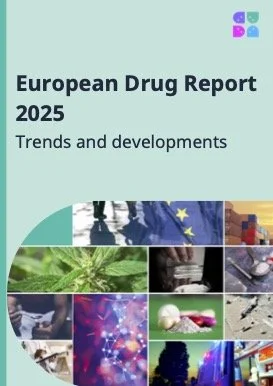By European Union Drugs Agency (EUDA)
The European Drug Report 2025: Trends and Developments presents the EUDA’s latest analysis of the drug situation in Europe. Focusing on illicit drug use, related harms and drug supply, the report provides a comprehensive set of national data across these themes, as well as on specialist drug treatment and key harm reduction interventions
This report is based on information provided to the EUDA by the EU Member States, the candidate country Türkiye, and Norway, in an annual reporting process. The purpose of the current report is to provide an overview and summary of the European drug situation up to the end of 2024. All grouping, aggregates and labels therefore reflect the situation based on the available data in 2024 in respect to the composition of the European Union and the countries participating in the EUDA’s reporting exercises. However, not all data will cover the full period. Due to the time needed to compile and submit data, many of the annual national data sets included here are from the reference year January to December 2023. Analysis of trends is based only on those countries providing sufficient data to describe changes over the period specified. The reader should also be aware that monitoring patterns and trends in a hidden and stigmatised behaviour such as drug use is both practically and methodologically challenging. For this reason, multiple sources of data are used for the purposes of analysis in this report. Although considerable improvements can be noted, both nationally and in respect to what is possible to achieve in a European-level analysis, the methodological difficulties in this area must be acknowledged. Caution is therefore required in interpretation, in particular when countries are compared on any single measure. Caveats relating to the data are to be found in the online Statistical Bulletin 2025 , which contains detailed information on methodology, qualifications on analysis and comments on the limitations in the information set available. Information is also available there on the methods and data used for European-level estimates, where interpolation may be used :
PortugalEuropean Union Drugs Agency (EUDA); 2025 355p





